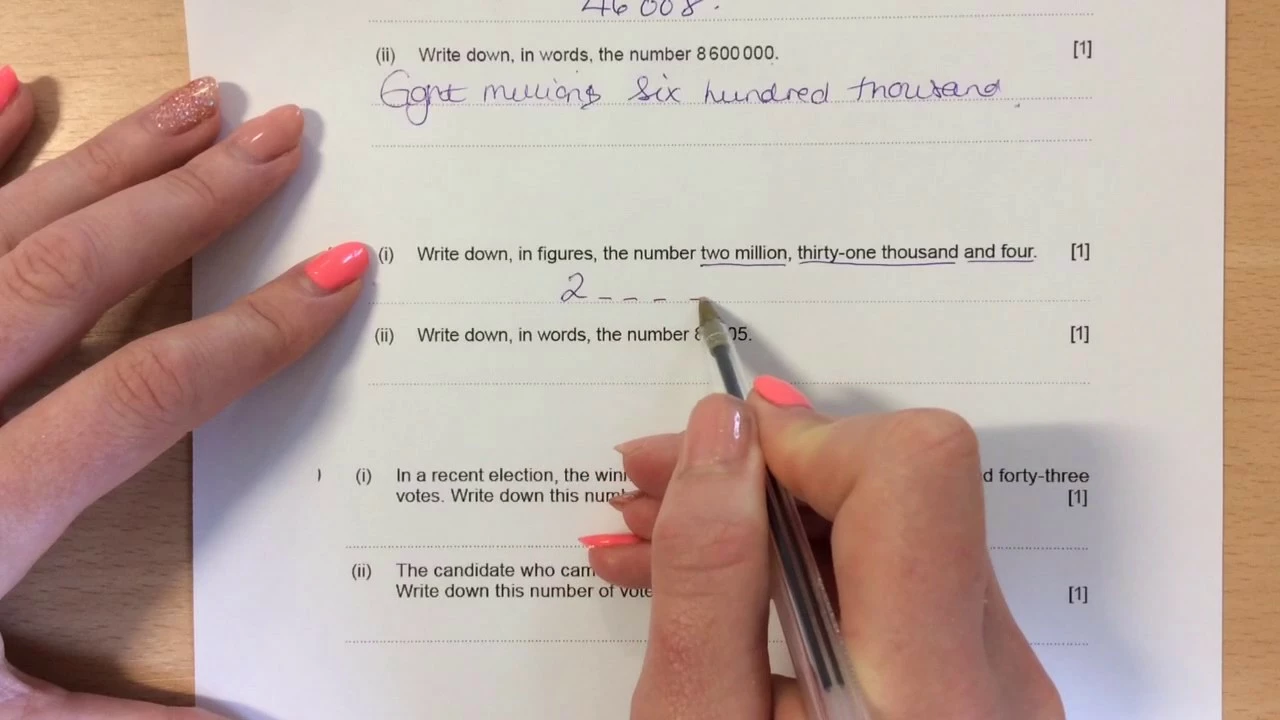22
Jul
2023

Introduction: Understanding Numerals and Figures
When we first learn to count, we start with the numbers we can count on our fingers. We soon realize, though, that the world of numbers is far more expansive than just ten fingers. In this article, we're going to take a closer look at one such number: ten thousand and eighteen. More importantly, we'll learn how to write this number in figures. It might seem simple, but it's always good to refresh our knowledge.
Breaking Down Large Numbers
Before diving into writing ten thousand and eighteen in figures, let's first understand how to break down large numbers. This is important because large numbers are made up of smaller units. For example, the number 10000 is made up of ten thousands. Understanding this can make writing large numbers in figures much easier.
Understanding Place Values
Another key concept to understand when writing numbers in figures is place value. Place value refers to the value of a digit based on its position in a number. For example, in the number 10000, the '1' is in the ten thousands place. Understanding place values can help us correctly write any number in figures, including ten thousand and eighteen.
Writing Ten Thousand in Figures
Now that we've brushed up on our understanding of large numbers and place values, let's start writing our number in figures. The first part of our number is ten thousand. In figures, we write this as '10,000'. As you can see, we use a comma to separate the thousands from the tens of thousands. This is a common practice in many English-speaking countries to make large numbers easier to read.
Writing Eighteen in Figures
The second part of our number is eighteen. This is a much smaller number, and it's probably one you're very familiar with. In figures, we write eighteen as '18'. Notice that we don't need to use any commas for smaller numbers.
Combining the Parts
Now that we've written both parts of our number in figures, it's time to combine them. When writing large numbers in figures, we usually go from left to right, starting with the largest place value. So, we start with our ten thousand ('10,000') and then add our eighteen. The result is '10,018'. That's our number in figures!
Practicing with Other Numbers
Now that you know how to write ten thousand and eighteen in figures, you can practice with other numbers. Try breaking down different large numbers into smaller parts, then writing each part in figures. Remember to start with the largest place value and work your way down. And don't forget to use commas to separate your thousands!
Common Mistakes to Avoid
While writing numbers in figures is quite straightforward, there are some common mistakes that people tend to make. One of the most common mistakes is forgetting to use commas to separate the thousands. Another common mistake is not understanding place values correctly. Always double-check your work to avoid these mistakes.
Conclusion: The Importance of Numbers
In conclusion, numbers play a vital role in our lives. Whether we're counting money, measuring distance, or calculating time, we use numbers every day. Understanding how to write numbers in figures, especially large numbers like ten thousand and eighteen, can help us in many ways. So keep practicing, and soon writing any number in figures will become second nature to you!

Write a comment